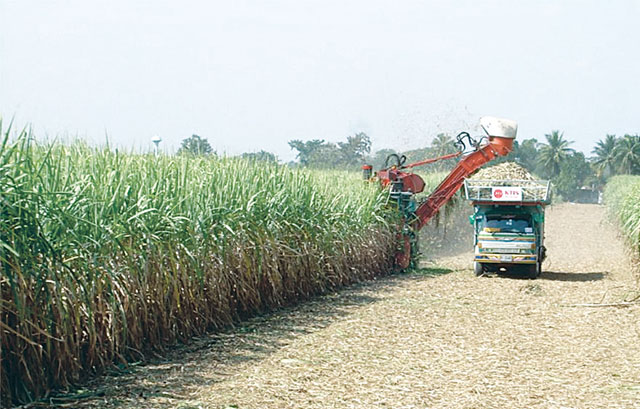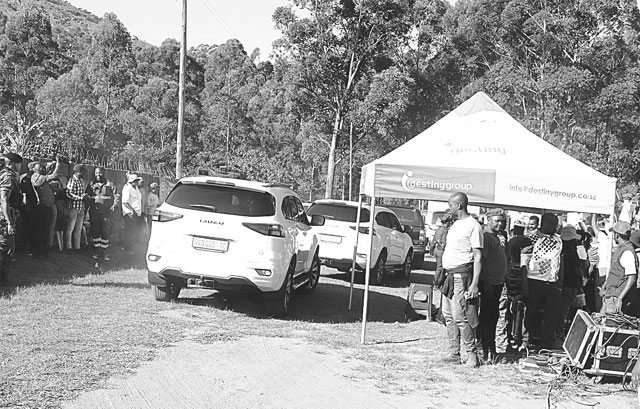By NOMFANELO MAZIYA | 2024-04-23

The United States Department of Agriculture (USDA) Post in Eswatini paints a positive picture for the country's sugar industry, forecasting a 10 per cent increase in sugar exports for the 2024/25 marketing year reaching 602 000 metric tonnes.
By capitalising on the current favourable conditions, expanding market access and adapting to changing global dynamics, the sugar industry is well-positioned for continued growth and export success, according to the department.
The marketing year for sugar cane is April-March, while the sugar marketing year is May-April.
This growth is attributed to a confluence of favorable factors increased production, strong global demand and strategic market access.
Eswatini Sugar Association (ESA) CEO Banele Nyamane confirmed the industry’s expectation which he said aligned with the previously reported forecast of a 6 per cent growth in cane production.
“We are expecting an increase from 599 kt to 635 kt,” said Nyamane.
According to the USDA, Eswatini is expected to see a rise in sugar production, providing a larger pool of sugar for export.
The department further highlights global sugar prices that surged in MY 2023/24 due to adverse weather conditions impacting major producers. This trend of high demand is expected to continue for at least part of marketing year 2024/25, incentivising Eswatini to capitalise on the export opportunity, according to USDA.
It indicates that Eswatini's membership in key trade agreements and its successful efforts to expand regional access position the country to benefit from a wider range of export markets.
Despite a slight dip in production last season, Eswatini's sugar exports in marketing year 2023/24 actually grew by 13 per cent.
Favourable global market conditions with elevated prices made Eswatini's sugar more attractive to international buyers, according to the department, attributing the 13 per cent growth in exports.
The department further notes that a weak exchange rate made Eswatini's sugar more competitive in the global market.
decline
Additional, Eswatini received an increased quota for duty-free sugar exports to the lucrative US market. The department underscores that Southern African Customs Union (SACU) regional trade bloc remains Eswatini's primary sugar export market, accounting for 68 per cent of total exports in marketing year 2022/23. However, exports to SACU are expected to see a slight decline in marketing year 2023/24 due to a drop in Eswatini's production and increased competition from South Africa, a fellow SACU member, which saw a rise in its own sugar production. The US market is considered premium for Eswatini's sugar, and the country utilises its full quota allocation of 17 213 MT base allocation with additional allocations possible under the US sugar tariff-rate quota (TRQ) program.
derogation
For marketing year 2024, Eswatini already received an additional 8 800 MT allocation on top of the base quota.
The department further cites that Eswatini benefits from derogation within Common Market for Eastern and Southern Africa (COMESA), allowing it to participate in the free trade agreement as a non-reciprocal member. Kenya, a major COMESA member, has a safeguard measure on imported sugar set to expire in November 2025.
The measure allows Eswatini duty-free access to the Kenyan market for sugar exports within a specific quota (350 000 MT) allocated among COMESA members, according to the department. Exceeding this quota attracts a 10 per cent tariff on refined sugar.
Currently, Kenya accounts for four per cent of Eswatini's sugar exports. The department states that the the EU’s future sugar import volumes from Eswatini are uncertain. Changes in the EU's domestic sugar policies, including increased domestic production and the end of preferential pricing for least developed countries, have led to a decrease in EU sugar imports and lower overall sugar prices within Europe, according to the department.
Sugar Production Poised for 6% increase
The Eswatini sugar industry is poised for a comeback in the 2024/25 marketing year, driven by a projected 6 per cent increase in cane production to 5.5 million metric tonnes (MT).
This growth, according to the United States Department of Agriculture (USDA), is a welcome reversal from the 6 per cent decline experienced in marketing year 2023/24 due to unfavorable weather conditions. A slight increase of 1.6 per cent is expected in the area dedicated to sugar cane production, reaching 64 000 hectares.
This growth is attributed to rising global sugar prices, incentivising producers who previously diversified to macadamia to return to sugar cane cultivation. “Growth in area is largely due to producers who previously diversified to macadamia returning to sugar cane production, especially since global sugar prices have risen in the past year,” said the department.
Favourable weather conditions are anticipated, leading to a return to normal production levels.
Carry-over cane from marketing year 2023/24, where some growers delayed harvesting due to unfavorable conditions, will boost overall production.
crucial
A return to average yields is expected due to improved weather and potentially, the use of more efficient irrigation techniques by some growers. Sufficient water for irrigation is crucial, and some growers have invested in drip irrigation systems to optimise water usage and fertiliser application, consequently boosting yields.
The Yellow Leaf Aphid, a pest, remains a significant concern for producers, causing yield loss and stunting cane growth. The industry currently lacks a comprehensive strategy to address this threat. Diesel and electricity price hikes, which account for a substantial portion of production costs, are straining margins for growers.
challenges
Fertiliser costs remain elevated compared to pre-Ukraine war levels.Increased use of pesticides due to pest infestations further adds to production costs.
The department notes that Eswatini relies heavily on South Africa for electricity, and the ongoing power generation challenges in South Africa pose a potential threat of even higher production costs or disruptions due to power outages.
Therefore, the renewal of the power supply contract between the two countries in October 2025 is a source of anxiety for Eswatini's sugar industry, as new terms could potentially mirror South Africa's current situation.
Eswatini cane growers Association Chairman Sipho Nkambule acknowledged the department’s projections of a 6 per cent increase in cane production for the 2024/25 marketing year.
He highlighted the industry's recovery from a difficult previous year, stating, "We are moving towards good and better results this year, and the 6 per cent growth is not alarming at all."
Nkambule emphasizes the positive correlation between production volume and revenue.
"More volumes mean more revenue," he says, expressing a general sense of optimism for the upcoming season.
share story
Post Your Comments Below

INTERNATIONAL superstar Uncle Waffles will handls the next edition of ‘Pop Sunday’ on...

The prosecution wants life sentences for the two former legislators, Bacede Mabuza and Mthandeni ...

Prime Minister, Russell Dlamini, had to abandon TUCOSWA’s May Day celebration after members...
Introducing to you Nosimilo Nkambule from Giligane, who shares that the oven's warmth is no...
All material © Swazi Observer. Material may not be published or reproduced in any form without prior written permission.
Design by Real Image Internet